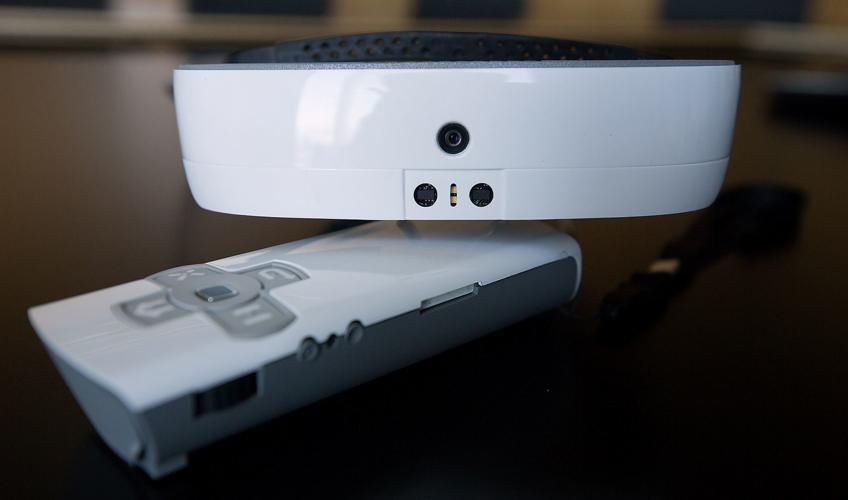A University of Arizona scientist helped create eyewear technology that is changing the way people with low vision see the world.
Optical sciences professor Hong Hua, along with graduate student Jason Kuhn, invented a breakthrough optical technology that has enabled the creation of electronic goggles, called eSight 3, which project magnified images that are channeled through a person’s eyes.
Using a 21-megapixel camera, eSight 3 enables people who have low vision or who are legally blind to become more independent, thrive at work and engage in more activities.
“I thought the idea of developing a technology that could help people was fascinating,” Hua said. “I felt like if I could transfer some of my skills and knowledge to something that will have an impact on people’s lives, it’s like my research has more meaning and usefulness.”
Specifically, Hua and Khun developed the optics that are inside the goggles, which work to magnify the images and project them onto a screen in front of each eye, providing more visual data to the brain and triggering an increased reaction from the eyes.
The optics help create high-resolution images in real time and allow the user to zoom up to 24 times, enabling them to see text up close or details in the distance.
“What’s really important, considering the fact that the user is someone who needs lots of magnification on the picture, is we needed to have an underlying display technology that had very small pixels, very dense pixels, so then we could optically magnify them and present larger pictures,” Hua said.
With a remote control, the user is capable of adjusting zoom, contrast, focus and color settings.
The goggles can also take photos and stream other content, like video, through the screens.
With globally recognized research in complex visualization systems and 3D display technologies, Hua was contacted by the eSight Corp., a small Canadian company, to help develop this technology.
After being released in 2017, eSight 3 has been used by thousands of people, according to the company.
“I got emails and phone calls from even local people in Tucson who are using the device,” Hua said.
Hua and Khun worked with Tech Launch Arizona, the office of the UA that commercializes inventions stemming from research, to patent the technology and license it to the eSight Corp.
“This is where we see the real-world impact of the leading research being done at the UA,” said Rakhi Gibbons, Tech Launch Arizona director of licensing. “We’re so proud of Dr. Hua and her work, and of the UA’s commitment to contributing to improving lives.”
The cost for eSight 3 starts at $5,950, with monthly financing options as low as $99 per month in North America.
The company also offers a fundraising program called eMPOWER for anyone who may not be able to afford monthly payments.
Because eSight is a new technology, the company said it has had some difficulty being covered by insurance. Some users, however, have independently advocated to their insurance or benefits provider and have successfully had their devices covered.
Charles Lim, eSight chief technology officer, said the partnership with Hua and Tech Launch Arizona has helped the company become a leader in near-eye optics. Hua hopes to be able to work on more projects like this and continue to use her expertise in optics to make a social impact.
“It’s very rewarding,” she said. “Every time I have a chance to work on something that could impact someone else’s life, I’m excited to do so.”





